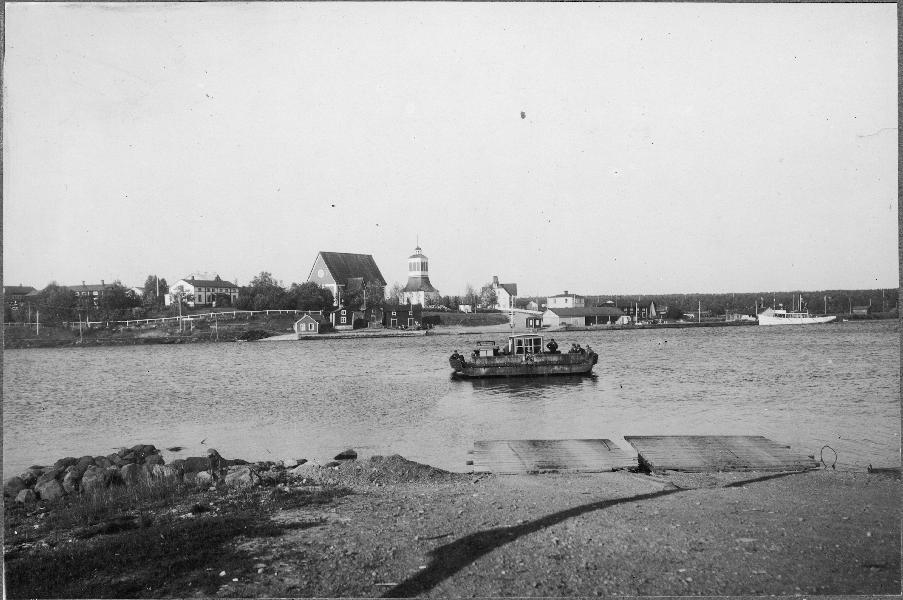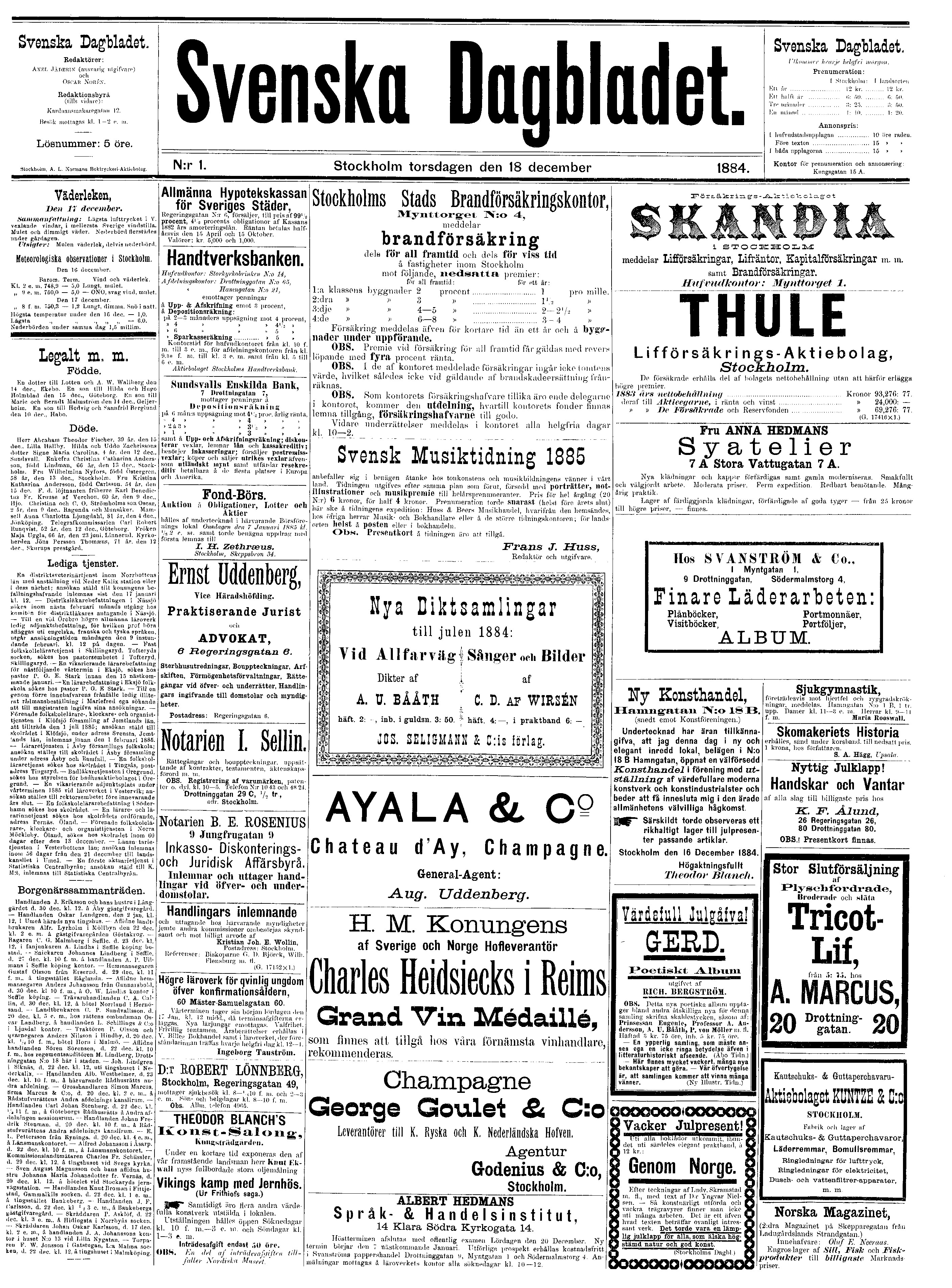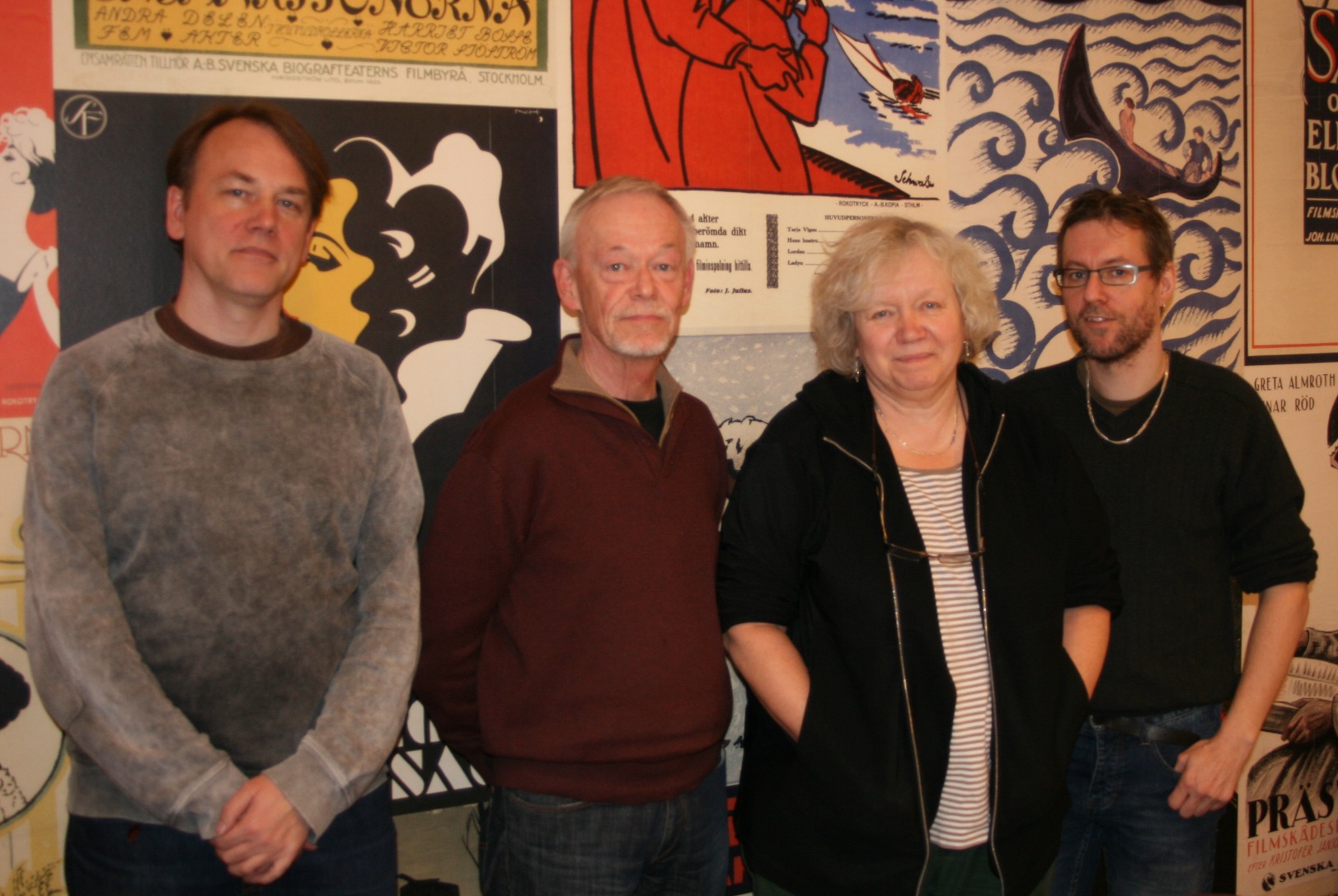|
Johan (film)
''Johan'', also known as ''Troubled Waters'' or ''Rapids of Life'', is a 1921 Swedish film directed by Mauritz Stiller, based on the 1911 novel ''Johan'' ''(Juha)'' by Juhani Aho. It tells the story of a young girl, married to an older farmer, who elopes with a handsome stranger, crossing dangerous rapids on a small boat in the process. Synopsis In a remote place of Sweden, men working on the digging of a canal to dry up a marsh are housed in the nearby farms. In one of them live Johan and his mother together with a young girl, Marit. One of the workers tries unsuccessfully to kiss her. Some time later, while Johan is out floating timber on the other side of the river, he falls and crushes his leg. He lights a fire that Marit sees from the house. She crosses the river on a rowing boat and carries him back home and takes care of him. On his sick-bed, he asks her to be his wife. She accepts it quite unresponsively. Johan's mother is determined to avoid what she sees as a misallia ... [...More Info...] [...Related Items...] OR: [Wikipedia] [Google] [Baidu] |
Mauritz Stiller
Mauritz Stiller (born Moshe Stiller, 17 July 1883 – 18 November 1928) was a Swedish film director of Finnish Jewish origin, best known for discovering Greta Garbo and bringing her to America. Stiller had been a pioneer of the Swedish film industry, writing and directing many short films from 1912. When Metro-Goldwyn-Mayer invited him to Hollywood as a director, he arrived with his new discovery Greta Gustafsson, whose screen name Greta Garbo is believed to have been his suggestion. After frequent disagreements with studio executives at MGM and Paramount Pictures, Stiller returned to Sweden, where he died soon afterwards. Life Moshe Stiller was born in Helsinki. His family was of Ashkenazi Jews, Ashkenazi Jewish heritage, having lived in Russia and Poland before settling in Finland, these countries being part of the Russian Empire. After his father's death when he was four, his mother committed suicide. He was raised by family friends. From an early age, Stiller was interes ... [...More Info...] [...Related Items...] OR: [Wikipedia] [Google] [Baidu] |
Kalix
Kalix ( sv, Kalix; Kalix dialect: ''Kôlis'', , phonemically ; fi, Kainuu; fit, Kainus) is a locality and the seat of the Kalix Municipality in Norrbotten County, Sweden. The name Kalix is believed to originate from the Sami word ''Gáláseatnu'', or "Kalasätno", meaning "The cold river" the ancient name of the Kalix River. It had 7,299 inhabitants in 2005, out of 17,300 inhabitants in the municipality of Kalix. Kalix Löjrom There is a culinary speciality specific to Kalix, called Kalix Löjrom, also referred to as caviar of Kalix. It is basically fish eggs (caviar) of the vendace, but because of the large influx of fresh water from the huge rivers around and in Kalix, this has transformed the taste of the fish eggs, rendering them unique in flavour to this area alone. It is the special mix of the elements bromine, strontium, iodine, selenium, molybdenum, barium and lithium, along with a unique ratio between strontium and barium, that makes the Kalixlöjrom unique, which ... [...More Info...] [...Related Items...] OR: [Wikipedia] [Google] [Baidu] |
Films Directed By Mauritz Stiller
A film also called a movie, motion picture, moving picture, picture, photoplay or (slang) flick is a work of visual art that simulates experiences and otherwise communicates ideas, stories, perceptions, feelings, beauty, or atmosphere through the use of moving images. These images are generally accompanied by sound and, more rarely, other sensory stimulations. The word "cinema", short for cinematography, is often used to refer to filmmaking and the film industry, and to the art form that is the result of it. Recording and transmission of film The moving images of a film are created by photographing actual scenes with a motion-picture camera, by photographing drawings or miniature models using traditional animation techniques, by means of CGI and computer animation, or by a combination of some or all of these techniques, and other visual effects. Before the introduction of digital production, series of still images were recorded on a strip of chemically sensitized ... [...More Info...] [...Related Items...] OR: [Wikipedia] [Google] [Baidu] |
Films Based On Finnish Novels
A film also called a movie, motion picture, moving picture, picture, photoplay or (slang) flick is a work of visual art that simulates experiences and otherwise communicates ideas, stories, perceptions, feelings, beauty, or atmosphere through the use of moving images. These images are generally accompanied by sound and, more rarely, other sensory stimulations. The word "cinema", short for cinematography, is often used to refer to filmmaking and the film industry, and to the art form that is the result of it. Recording and transmission of film The moving images of a film are created by photographing actual scenes with a motion-picture camera, by photographing drawings or miniature models using traditional animation techniques, by means of CGI and computer animation, or by a combination of some or all of these techniques, and other visual effects. Before the introduction of digital production, series of still images were recorded on a strip of chemically sensitized ... [...More Info...] [...Related Items...] OR: [Wikipedia] [Google] [Baidu] |
1921 Films
The following is an overview of 1921 in film, including significant events, a list of films released and notable births and deaths. Top-grossing films (U.S.) The top seven films released in 1921 by U.S. gross are as follows: Events *January 21 – The silent comedy drama ''The Kid'', written by, produced by, directed by and starring Charlie Chaplin (in his Tramp character) – his first full-length film as a director – and featuring Jackie Coogan, is released in the United States. It is the year's second-highest-grossing film. *March 6 – The silent epic war film '' The Four Horsemen of the Apocalypse'', adapted for the screen by June Mathis, is released in the United States. It is the year's highest-grossing film (and the sixth-best-grossing silent film of all time), propels Rudolph Valentino to stardom and inspires a tango craze and a fashion for gaucho pants. *August 29 – Broadway's first $1 million theatre, Loew's State opens. *September 5 – Popular comedian R ... [...More Info...] [...Related Items...] OR: [Wikipedia] [Google] [Baidu] |
Svenska Dagbladet
''Svenska Dagbladet'' (, "The Swedish Daily News"), abbreviated SvD, is a daily newspaper published in Stockholm, Sweden. History and profile The first issue of ''Svenska Dagbladet'' appeared on 18 December 1884. During the beginning of the 1900s the paper was one of the right-wing publications in Stockholm. Ivar Anderson is among its former editors-in-chief who assumed the post in 1940. The same year ''Svenska Dagbladet'' was sold by Trygger family to the Enterprise Fund which had been established by fourteen Swedish businessmen to secure the ownership of the paper. The paper is published in Stockholm and provides coverage of national and international news as well as local coverage of the Greater Stockholm region. Its subscribers are concentrated in the capital, but it is distributed in most of Sweden. The paper was one of the critics of the Prime Minister Olof Palme, and in December 1984 it asked him to resign from the office following his interview published in ''Hufvud ... [...More Info...] [...Related Items...] OR: [Wikipedia] [Google] [Baidu] |
Swedish Film Database
The Swedish Film Database ( sv, Svensk filmdatabas) is an Internet database about Swedish films, published by the Swedish Film Institute The Swedish Film Institute ( sv, Svenska Filminstitutet) was founded in 1963 to support and develop the Swedish film industry. The institute is housed in the ''Filmhuset'' building located in Gärdet, Östermalm in Stockholm. The building, comp .... It contains information about all Swedish films from 1897 onwards and foreign films that had cinema premiere in Sweden. It also provides many biographies of actors, directors, producers etc. who participated in Swedish films over the years. It is created with the support of the Bank of Sweden Tercentenary Foundation. The database comprises about 62,000 films (17,000 Swedish films) and 265,000 people. References External linksSwedish Film Database Swedish film websites Online film databases Databases in Sweden {{website-stub ... [...More Info...] [...Related Items...] OR: [Wikipedia] [Google] [Baidu] |
Cinémathèque Française
The Cinémathèque Française (), founded in 1936, is a French non-profit film organization that holds one of the largest archives of film documents and film-related objects in the world. Based in Paris's 12th arrondissement, the archive offers daily screenings of worldwide films. History The collection emerged from the efforts of Henri Langlois and Lotte H. Eisner in the mid 1930s to collect and screen films. Langlois had acquired one of the largest collections in the world by the beginning of World War II, only to have it nearly wiped out by the German authorities in occupied France, who ordered the destruction of all films made prior to 1937. He and his friends smuggled huge numbers of documents and films out of occupied France to protect them until the end of the war. After the war, the French government provided a small screening room, staff and subsidy for the collection, which was relocated to the Avenue de Messine. Significant French filmmakers of the 1940s and 1950s, ... [...More Info...] [...Related Items...] OR: [Wikipedia] [Google] [Baidu] |
Henri Langlois
Henri Langlois (; 13 November 1914 – 13 January 1977) was a French film archivist and cinephile. A pioneer of film preservation, Langlois was an influential figure in the history of cinema. His film screenings in Paris in the 1950s are often credited with providing the ideas that led to the development of the auteur theory. Langlois was co-founder of the Cinémathèque Française with Georges Franju and Jean Mitry and also co-founder of the International Federation of Film Archives (FIAF) in 1938. Through close collaboration with the Cinémathèque's longtime chief archivist, Lotte Eisner, he worked to preserve films and film history in the post-war era. An eccentric who was often at the center of controversy for his methods, he also served as a key influence on the generation of young cinephiles and critics who would become the French New Wave. In 1974, Langlois received an Academy Honorary Award for "his devotion to the art of film, his massive contributions in preserving it ... [...More Info...] [...Related Items...] OR: [Wikipedia] [Google] [Baidu] |
Swedish Film Institute
The Swedish Film Institute ( sv, Svenska Filminstitutet) was founded in 1963 to support and develop the Swedish film industry. The institute is housed in the ''Filmhuset'' building located in Gärdet, Östermalm in Stockholm. The building, completed in 1970, was designed by architect Peter Celsing. Function The Swedish Film Institute supports Swedish filmmaking and allocates grants for production, distribution and public showing of Swedish films in Sweden. It also promotes Swedish cinema internationally. Furthermore, the Institute organises the annual Guldbagge Awards. The Swedish Film Database is published by the institute. Through the Swedish Film Agreement, between the Swedish state and the film and media industry, the Government of Sweden, the TV companies which were party to the agreement, and Sweden's cinema owners jointly fund the Film Institute and thus, indirectly, Swedish filmmaking. The agreement ran from January 1, 2006, until December 31, 2012. The building also ... [...More Info...] [...Related Items...] OR: [Wikipedia] [Google] [Baidu] |
IMDb
IMDb (an abbreviation of Internet Movie Database) is an online database of information related to films, television series, home videos, video games, and streaming content online – including cast, production crew and personal biographies, plot summaries, trivia, ratings, and fan and critical reviews. IMDb began as a fan-operated movie database on the Usenet group "rec.arts.movies" in 1990, and moved to the Web in 1993. It is now owned and operated by IMDb.com, Inc., a subsidiary of Amazon. the database contained some million titles (including television episodes) and million person records. Additionally, the site had 83 million registered users. The site's message boards were disabled in February 2017. Features The title and talent ''pages'' of IMDb are accessible to all users, but only registered and logged-in users can submit new material and suggest edits to existing entries. Most of the site's data has been provided by these volunteers. Registered users with a prov ... [...More Info...] [...Related Items...] OR: [Wikipedia] [Google] [Baidu] |
Treaty Of Tartu (Russian–Finnish)
Treaty of Tartu may refer to: * Treaty of Tartu (Estonia–Russia) * Treaty of Tartu (Finland–Russia) , image = Treaty-of-Tartu.png , image_width = 150px , caption = The Finland–Russia border as decided in the Treaty of Tartu. Petsamo (red) became part of Finland, while Repola and Porosozero, Porajärvi (green ... See also * Treaty of Dorpat, a Russo-Swedish treaty of 1564 {{disambig ... [...More Info...] [...Related Items...] OR: [Wikipedia] [Google] [Baidu] |






